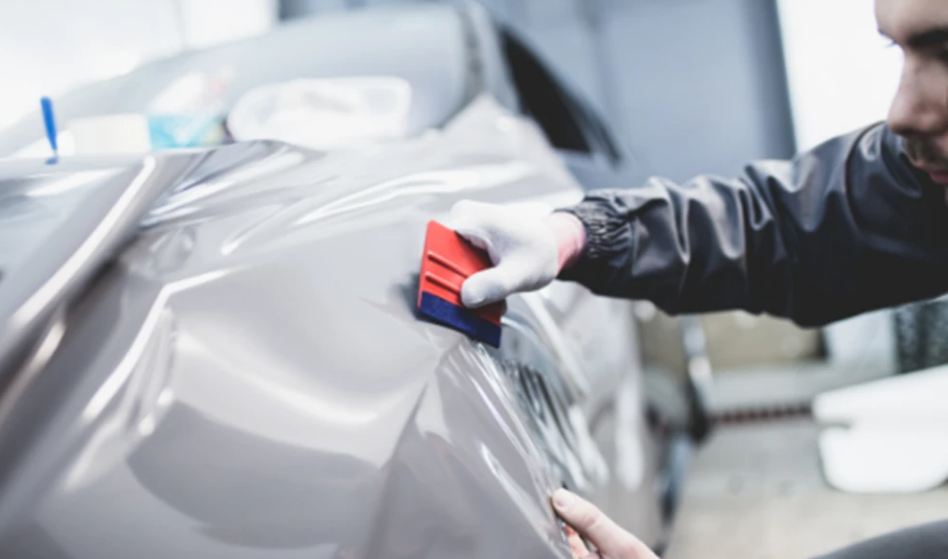Since the 1950s, vinyl was used for custom lettering, logos, and decals, but full car wraps didn’t catch on. Then, in 1993, a mundane, yet revolutionary, idea came along: Why not a vinyl wrap a car in its entirety? Germany mandated all taxis be colored beige, but nowhere stipulated paint. Kay Premium Marking Films saved the day with a beige vinyl, making practically any vehicle regulation-compliant in just a few hours.
Vinyl car wrap is a blend of polyvinylchloride (PVC) polymer, from which the word “vinyl” comes from, with various additives to make it flexible, resistant to ultraviolet light, and add color. These ingredients are blended, cast onto moving sheets, then baked and cured.
Vinyl Today
The resulting vinyl sheet can be as thin as 2 mil, just two thousandths of an inch thick. After adhesive application, vinyl car wrap sheeting may be cut into smaller rolls, for individual consumers, or sent to printers, for custom graphics as simple or as complex as you can imagine.
Put most simply, vinyl car wrap is adhesive-backed plastic sheeting, but oh what we can do with a roll of plastic today! In the last few years, we’ve come a long way from solid colors, and innovators in the car wrap industry have developed metallic, reflective, matte, gloss, pearlescent, color-changing, even factory-matching and Pantone colors, not to mention beautiful, stunning, and complex patterns and combinations.
Pros And Cons Vinyl VS Paint
If you’re considering changing the look of your vehicle with a paint job or a vinyl wrap, each has its advantages. A paint job used to be the de facto standard – after all, it’s worked for over a century. A paint job requires a professional’s touch, not to mention professional equipment, to get a showroom finish, which drives up the cost and slows things down. Multiple or special colors, such as pearlescent or metallic finishes, further increases time and costs. Graphics or custom designs require another specialist’s touch, typically hand finished.
Such basic or custom paint jobs last the life of the vehicle, possibly decades. On the one hand, such permanence may be desirable, but outlandish combinations can be polarizing. For a show car with a pedigree, custom paint can dramatically increase its value. On the other hand, custom paint can significantly reduce its desirability – not everyone wants a pink skulls daily driver.
Edging And Finishing
A great finish starts with wrapping the edges of the panels. Use the utility knife to trim excess material to within a quarter-inch (2-3 mm) of the edge – counter-intuitively, greater margins are worse. Use the heat gun to evenly heat the edges of the panel and vinyl wrap to at least 212 °F (100 °C), activating the adhesive. Use the thermometer to verify even heating. Use the squeegee and your fingers to firmly seal the edge of the vinyl to the panel. If heating the vinyl to get it around a sharp curve, be sure the vinyl cools before trimming.
Once corners and edges are sealed and set, use the heat gun on the rest of the panel or piece, at least 212 °F. This activates the adhesive on the rest of the vinyl for a long-term bond. Use your hands and squeegee to firmly bond the vinyl wrap to the surface. Bubbles may appear at this stage, but they can be popped safely with a pin or utility blade and pressed down with your fingers. Again, use the thermometer to verify even heating. Wait at least 12 hours for the adhesive to fully set.
